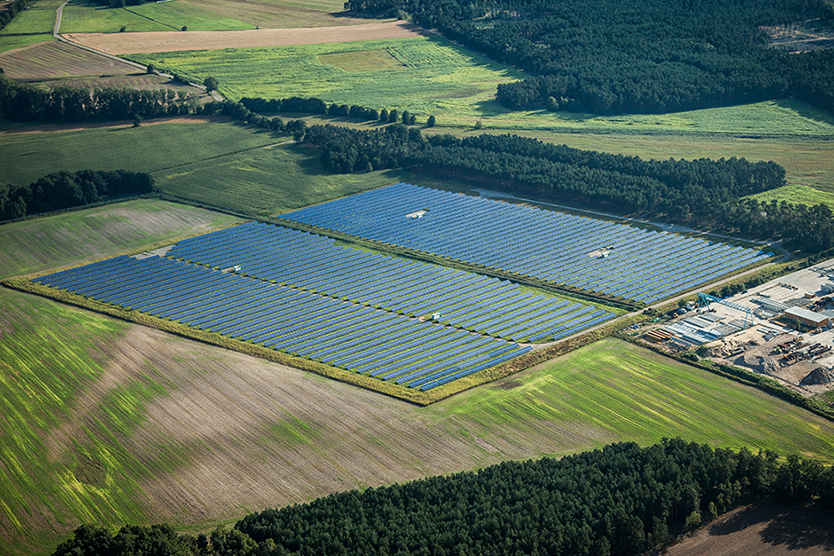National auctions
Solar installations
In Germany, grid-connected photovoltaic installations contribute significantly to the electricity supply and receive funding under the Renewable Energy Sources Act. The level of funding awarded to ground-mounted PV installations and large roof-top PV installations with an output exceeding 750 kilowatts (kW) is determined by competitive auction. Investors can submit their bids during the auction rounds, which are announced by the Bundesnetzagentur. Solar installations with an output lower than 750 kW will remain entitled to funding at rates set by the state.
The rules for the auctions draw on the experience gained with the pilot auctions for ground-mounted PV installations from 2015 and 2016. Almost all of the photovoltaic projects (94% on average) that were awarded funding in one of the three rounds of auctions held in 2015 were implemented within the two-year deadline and have since started to operate.
To learn more about “Solar Eneregy”, visit the Economic Affairs Ministry's renewable energies information portal (in German).
Offshore wind energy
The aim of the Federal Government is to increase the installed capacity of offshore wind energy installations to a total of 15 gigawatts between 2021 and 2030. To achieve this goal in a cost-efficient way, the government uses auctions to establish the fees for offshore wind-powered installations. The basis for this is the Offshore Wind Energy Act. In addition to this, the special ordinance on fees for electricity (StromBGebV) governs the fees that bidders need to pay for having their bid verified and for modifying their bid as part of the bidding process. The auctions determine the level of funding awarded to operators per kilowatt-hour of electricity generated. In addition to this, the wind farms which have won funding in the auction will also be given a connection to the grid allowing them to feed the electricity which they have generated into the grid.
Further information on the auctions and outcomes can be found (in German) at: www.erneuerbare-energien.de.
General information about solar energy can also be found (in German) at: www.erneuerbare-energien.de.
Onshore wind-powered installations
The use of onshore wind energy is gaining in importance as one of the most cost-efficient sectors for the expansion of renewable energies. The further expansion of onshore wind energy is determined not only by the change in the funding available under the Renewable Energy Sources Act (EEG), but also by the limited areas available for the expansion of onshore wind energy. Repowering is a strategy to develop onshore wind energy: many old, smaller wind power plants can be replaced by modern, more powerful systems, especially in good locations. In principle, auctions cover installations with an installed capacity of at least 750 kW. Pilot installations which are used to test innovative technologies are exempt from this rule.
Further information on the auctions and outcomes can be found (in German) at: www.erneuerbare-energien.de.
More information about onshore wind energy can be found (in German) at: www.erneuerbare-energien.de.
Biomass Installations
Up until now, biomass has been the most important and most versatile source of renewable energy in Germany. Biomass in solid, liquid and gaseous form is being used for electricity and heat generation and for the production of biofuels. The use of bioenergy is to be further expanded in the heat, transport and electricity sectors. Even though Germany has the technical potential to increase its use of bioenergy, this potential is limited and the exploitation of bioenergy often is expensive. Auctions are held on 1 September of each year.
More information about biomass can be found (in German) at www.erneuerbare-energien.de.
Detailed information about the national auctions and outcomes can also be found (in German) at www.erneuerbare-energien.de.
Joint auctions for onshore wind and solar installations
In a pilot project, joint auctions for onshore wind and solar installations will be held in the years from 2018 to 2020. The rules governing these auctions are set out in the Ordinance on joint auctions for onshore wind and solar installations (GemAV) and the Ordinance on CHP auctions (KWKAusV), both of which entered into force on 18 August 2017.
The aim of the joint auctions is to test the way in which the cross-technology auctions work, look at their effects, and evaluate final funding awards, particularly compared to those granted as part of technology-specific auctions. The running of a pilot project does not necessarily mean that cross-technology auctions will be held beyond 2020. The total volume of installed capacity being auctioned in joint auctions is 400 megawatts per year. This is divided up equally into two rounds of bidding, with bid deadlines of 1 April and 1 November. Detailed information on the joint auctions can be found here (PDF, 67 KB).
More information about the auctions and outcomes can be found (in German) at: www.erneuerbare-energien.de.
